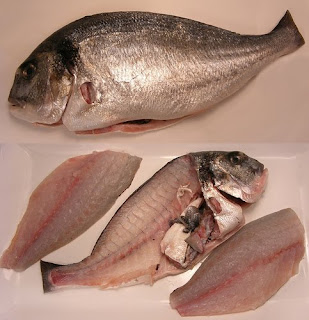Small fish, big opportunity - KansasCity.com
Small fish, big opportunity - KansasCity.com
Small fish, big opportunity
Sometimes the environmental challenges facing our oceans seem so large that it's hard to know where to start solving them. Changes in climate, degradation of habitat and rising demand to feed an ever-growing world population are just a few of the daunting ocean-related problems our nation faces. Over the past several months, however, a collection of conservationists, anglers and others have come together to urge federal policymakers to safeguard the array of species that serve as the foundation for a healthy marine ecosystem. And, to their credit, regional fishery managers on both coasts heeded the message these advocates delivered: If we want to protect the oceans, it makes sense to start small. Species such as menhaden, sardines and herring - commonly known as forage fish - are the lifeblood of a healthy ocean. Swimming together in dense schools, these oil-rich fish feed on microscopic plants and animals and then become nourishment for larger wildlife as a crucial link in the marine food web. These fish account for more than one-third of all ocean species caught around the world. But unlike catches of cod or tuna, most of the forage fish that is caught is not consumed by people. Take menhaden, for example. Giant schools once ranged along the Atlantic coast, feeding whales and seabirds and commercially important fish. But menhaden populations have plummeted 90 percent in just the past 25 years and remain at a record low. Despite their declining numbers, hundreds of millions of menhaden are still hauled in and ground up to be used in fertilizer, pet and livestock feed, and dietary supplements for people. This removal of forage fish can have significant impacts on coastal ecosystems. Studies have found that the amount of menhaden in the diets of striped bass, ospreys and bluefish has declined. And on the Pacific coast, the decrease of forage fish has been linked to diminished salmon runs, losses in seabird populations, and the unnecessary death of marine mammals. In fact, in 2009 scientists documented 80 percent mortality among pups in a population of sea lions off the coast of California when females left them for a week at a time in search of food. According to a report issued this year by a panel of 13 eminent ocean scientists, forage fish are twice as valuable left in the water as they are caught in a net because of the vital role they play as food for commercially valuable predators such as tuna and cod. In other words, it's important for federal fishery managers to ensure that there are enough of them to feed everything else in the sea. That's why conservation and fishing organizations - including the Pew Environment Group - have urged the federal government to step up protection of forage species in the Atlantic and the Pacific. In the Atlantic, we are calling on the National Oceanic and Atmospheric Administration to follow the expressed will of regional fishery councils and implement new protections for menhaden and river herring. And on the West Coast, we are asking NOAA officials to fulfill the Pacific Fishery Management Council's June commitment to forestall fishing for certain forage species until there is proof that catching such forage fish will not harm the overall ecosystem. Even though the regional fishery councils endorsed these common-sense objectives and earned broad public support, those commitments mean nothing until NOAA implements the policies. Unfortunately, agency officials have been slow to embrace the councils' direction. America's oceans offer a tremendous economic asset and cultural legacy. Whether you enjoy fishing on the water, eating a sumptuous seafood meal, or watching whales and seabirds, all of these activities depend upon a thriving and healthy marine ecosystem. Forage fish nourish other wildlife and sustain important commercial and recreational fisheries. If we're going to protect our oceans as a whole, we must make sure that healthy populations of these smaller prey species remain in the water to support the entire food web. --- ABOUT THE WRITERS Peter Baker (pbaker@pewtrusts.org ) and Paul Shively (pshively@pewtrusts.org ) of the Pew Environment Group are both are avid anglers who work to conserve fish in New England and along the West Coast, respectively. This essay is available to McClatchy-Tribune News Service subscribers. McClatchy-Tribune did not subsidize the writing of this column; the opinions are those of the writer and do not necessarily represent the views of McClatchy-Tribune or its editors. 2012, Pew Trusts


Comments